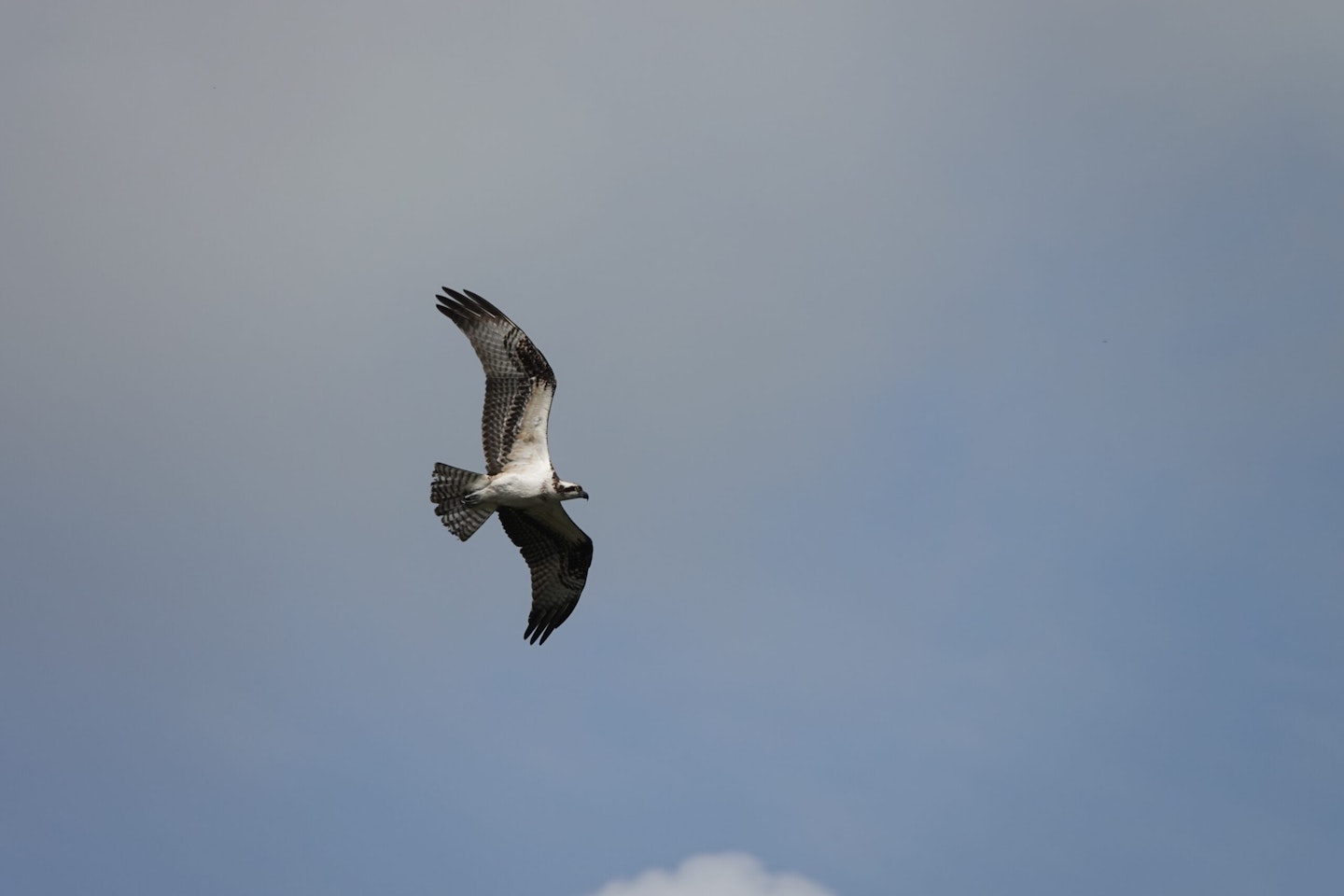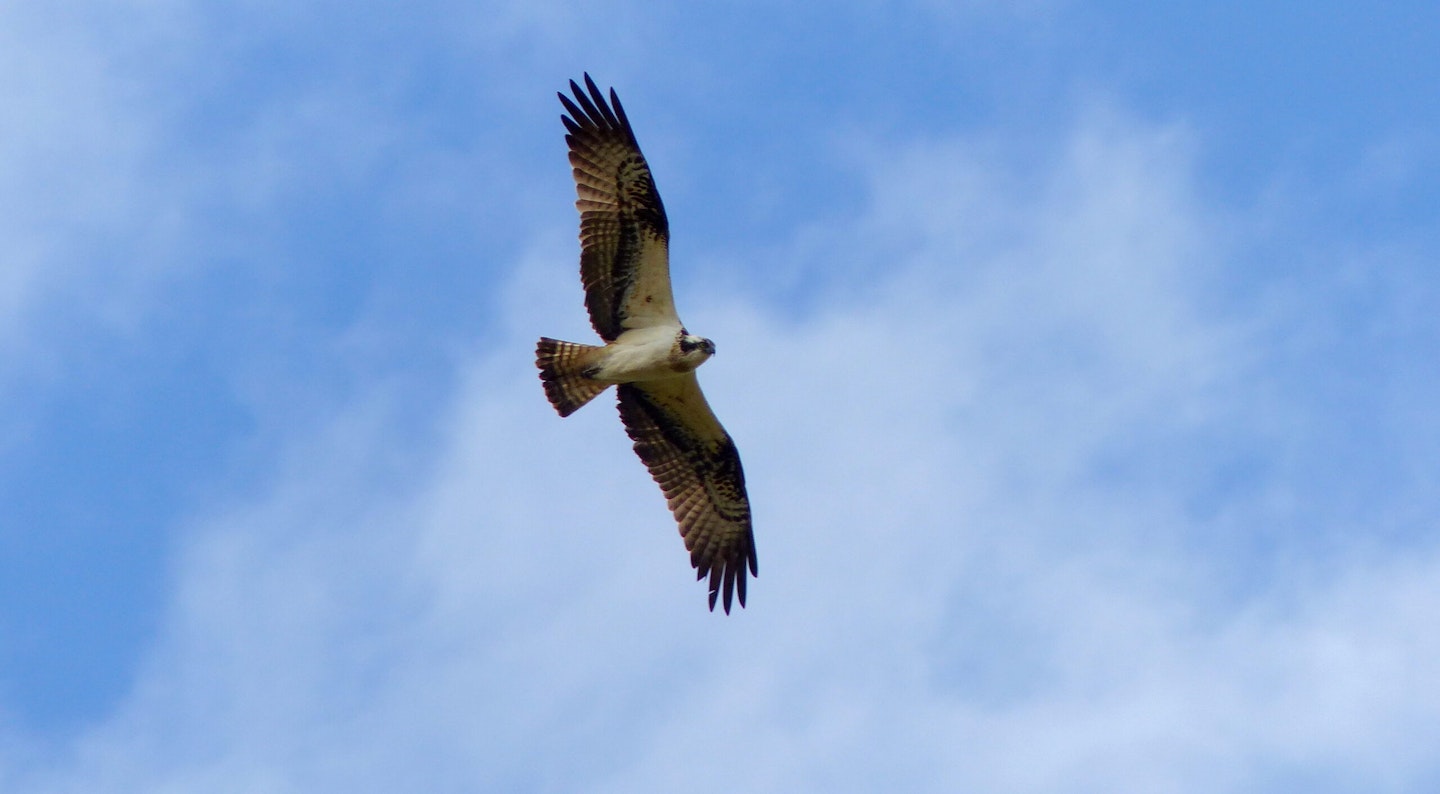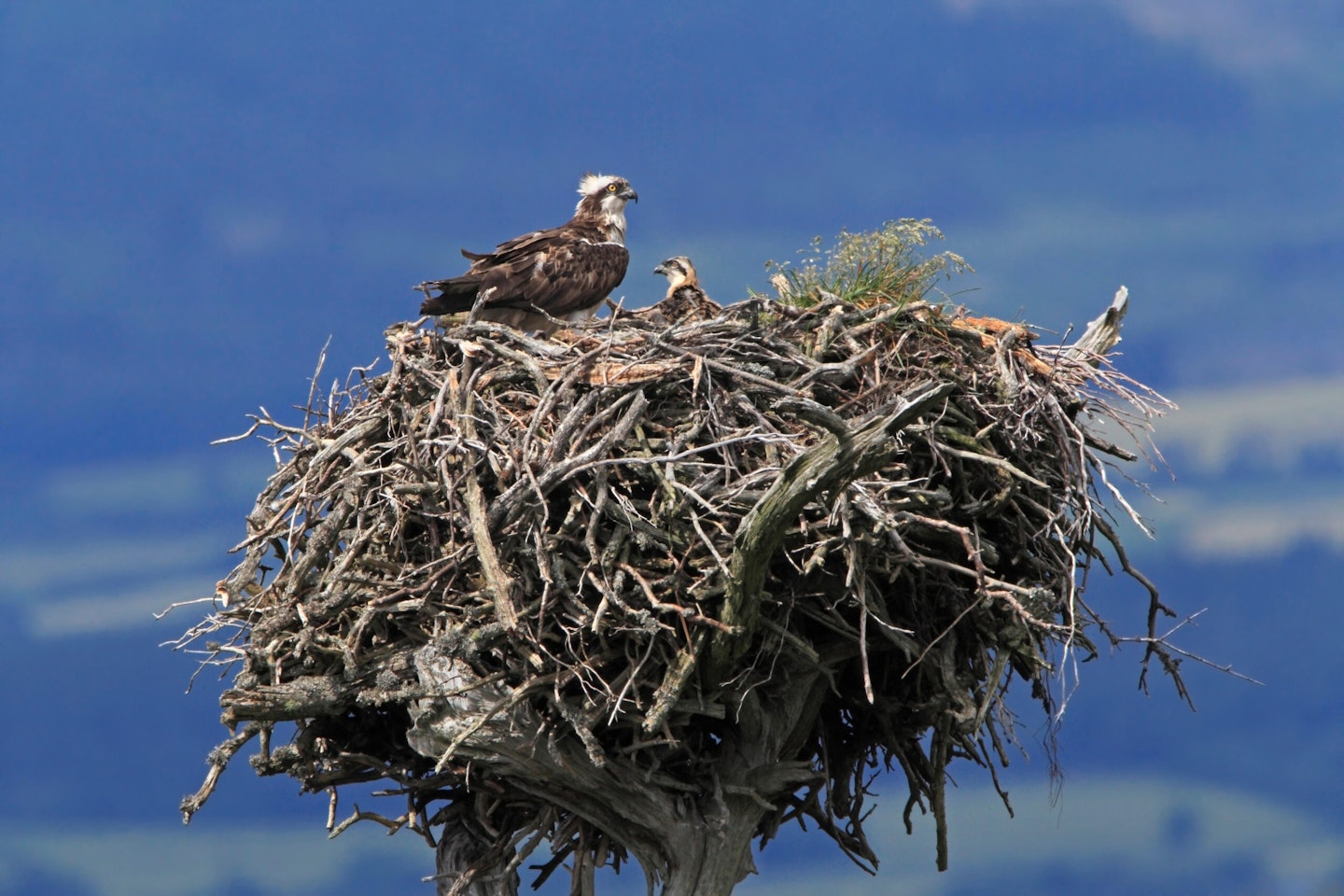Even if they don’t breed locally, we all have a chance to see this superb raptor, writes Ruth Miller

It started with a single yelp of alarm. First one Herring Gull took off, followed by more, and still more joined the fray until every Herring Gull in Llandudno was wheeling and spiralling in the air like flakes in a snowglobe. Their raucous alarm calls increased dramatically in volume and other avian residents were drawn into the panic as Jackdaws, Carrion Crows, and Feral pigeons dashed to and fro in disarray. The sound and spectacle of so many birds in a panic caught our attention too, and we grabbed our binoculars and ran to the window. An alarm response of this magnitude could mean only one thing: Osprey!
We scanned the skies over Llandudno and the hills beyond trying to spot the raptor. Was it higher than the gulls? Were they mobbing it or avoiding it? We were frantic to spot the bird, almost certainly approaching us as the kettle of gulls drew closer. And then suddenly there it was, an Osprey on a mission, powering purposefully northwards over the town towards the Great Orme’s Head, a dark point in the centre of a white whirling vortex as the Herring Gulls escorted their unwanted visitor off the premises.

The Osprey flew past our windows so close that we were treated to a fine view of the plumage of this magnificent raptor. It continued flying northward until out of sight and the Herring Gulls, Jackdaws, and pigeons settled back down to soothe ruffled feathers. “Wow, that was an Osprey and a half for the year list,” we said to visiting friends Rachael and Mike, as all four of us settled back to our tea and cake. Mike and Rachael were also elated, this was their first Osprey of the year, and they had not expected to see such an exciting bird while indoors.
The Osprey migration conveyor belt had begun. We are fortunate to have a commanding view over Llandudno and the North Wales coast from our windows and over the years we've enjoyed many wonderful sightings of migrating Ospreys. We have learned that the trick is to pay attention to the Herring Gulls. While they will respond with alarm to a Common Buzzard cruising over the town and will have a bit of a squawk and a flap if there’s a Peregrine is chasing its prey, nothing compares to the scale of their response to an Osprey. Every single gull in the vicinity will take to the sky because of the perceived threat. Sometimes they will follow the Osprey, as on this occasion, but often they will fly in the opposite direction to evade the raptor, so it can be tricky to pick out the Osprey, particularly as it can blend into the crowd surprisingly well. As the season progresses, the gulls become more accustomed to seeing Ospreys and moderate their response, but the first bird of the season will always cause sheer pandemonium.
Thank heavens for our gull early warning system to put us on high alert, too. Over the next two days, we enjoyed watching three more Ospreys from our windows as they flew over Llandudno. Two birds were extremely high and possibly taking advantage of the fine weather and southerly winds to press on northward as far as they could. The fourth sighting in the late afternoon involved another bird flying low over the town from the direction of the Conwy estuary towards the Great Orme, and as it flew past our fourth-floor lounge windows we could see quite clearly a large fish grasped in its talons. A takeaway fish supper to enjoy on the Great Orme, perhaps?!
The following morning just after dawn, an Osprey, presumably the same individual, again flew low over the town, very unusual to see one so early in the day. Many birds seem to migrate following the distinctive landmarks of the Conwy Estuary and the Creuddyn Peninsula, which points northward into the Irish sea like a finger culminating in the Great Orme at its tip. Realising that they now need to fly over sea rather than over land can make migrants of any species pause here to rest and refuel before continuing on their journey. So perhaps the Conwy Estuary was acting as a motorway service station for our fish-carrying Osprey, with the cliffs of the Great Orme as an overnight roost?
Lockdown in 2020 was a particularly fruitful year for Osprey sightings from home though that probably had more to do with us being confined to barracks and gazing out of the windows in despair for long periods of time, rather than a big increase in the number of migrating Ospreys, though they are a UK raptor success story.

Ospreys have had a turbulent history in Britain, having been a victim of persecution here since Medieval times, not to mention the more recent threat from egg collectors decimating their population. Individual pairs of Ospreys may have bred in Scotland intermittently, but it was in the 1950s that the future of breeding Ospreys in Britain was secured when a visitor centre was established by the RSPB at Loch Garten in Scotland to allow the general public to monitor and enjoy watching the Ospreys nesting, thereby protecting the birds from persecution. Since then, they have gone from strength to strength with generations of Ospreys returning and expanding their breeding range.
Although our high-flying Ospreys may have been heading up to Scotland, Wales now also enjoys a healthy breeding population, with NGO-supported Osprey Projects on Llyn Brenig in the Clocaenog Forest in North Wales, as well as nests on the Glaslyn and Dyfi estuaries further south.
Ospreys have been breeding successfully here long enough that the returning youngsters are now mature enough to breed themselves, so they are spreading out to find territories of their own. There is plenty of suitable habitat for breeding and feeding around here, so maybe they will even settle down right here on our doorstep. Our alarm-calling Herring Gulls may not be happy but I’m sure they'll get used to the new neighbours in time.
If you want to find out more about breeding Ospreys in Wales, check out the following links:
Subscribe to Bird Watching Magazine today and never miss an issue! Choose Print+ and you will receive 13 issues delivered straight to your door with FREE UK delivery plus digital access on your smart devices. View our latest offers here
